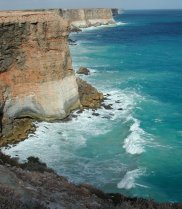Building a bigger picture of the Bight
The A$20 million Science Program aims to obtain information about the unique marine environment and potential marine resources within the Great Australian Bight (GAB), and will provide information to decision makers to support sustainable development in the region and monitor possible future impacts.
“The Science Program will be one of only a few whole-of-ecosystem studies undertaken in Australia,” Dr David Smith of CSIRO’s Wealth from Oceans Flagship stated. “It will focus on collating information about the marine resources of the Great Australian Bight and providing vital knowledge to inform future decisions for sustainable development in the region.”
The A$20 million Science Program aims to obtain information about the unique marine environment and potential marine resources within the Great Australian Bight.
The research officially started on 4 April 2013, with scientists setting sail for the GAB aboard the RV Southern Surveyor to collect water and seafloor sediments from depths three kilometres below the surface. These will be the deepest set of samples ever taken from the Bight and will provide an insight into the distribution, diversity and ecology of the deepwater species of animals, plants and microbes which reside in the central and eastern GAB.
“BP is already undertaking a range of studies to ensure environmentally responsible operations in the GAB. This additional multidisciplinary research program will build on these and other studies to improve the understanding of how the GAB ecosystem functions,” Phil Home, Managing Director for BP Developments in Australia said. “It provides an opportunity for co-investment by world class research institutions such as CSIRO and the member–institutions of MISA.”
The research data obtained will eventually provide a conceptual model of the structure and dynamics of the GAB ecosystem.
“The research results will also be made available for the benefit of other stakeholders interested in the region. These include Commonwealth and State regulators and governments, commercial users and a diverse range of research, community and environmental groups through publication in science journals, literature and published reports,” said Prof Gavin Begg, SARDI Aquatic Sciences Research Chief and MISA Steering Committee member.
The Collaborative Research Science Program is a A$20 million investment over four years. It will be advised by an Independent Science Panel comprising internationally recognised experts in key discipline areas.
Media resources
Click image for high resolution version
Please contact Keirissa Lawson for high resolution, broadcast quality footage of RV Southern Surveyor.


